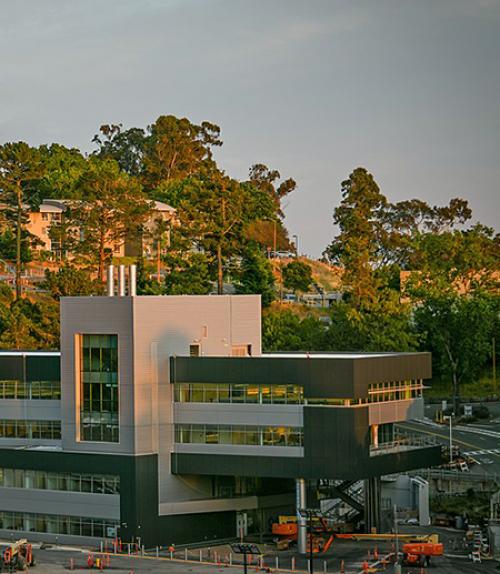Christopher Morrison Pierce, a doctoral candidate in the field of physics, has been selected by the U.S. Department of Energy (DOE) for the Office of Science Graduate Student Research (SCGSR) Program.
The SCGSR Program provides supplemental funds for awardees to conduct part of their thesis research at a host DOE laboratory, in collaboration with a DOE laboratory scientist. The research projects are intended to advance awardees’ overall doctoral research and training while providing access to the expertise, resources, and capabilities available at the DOE laboratories.
Pierce will work at the Lawrence Berkeley National Laboratory on accelerator and detector research and development. His research focuses on ways to capture chemical reactions at the atomic level.
“At the moment, we can only capture ‘molecular movies’ for the simplest compounds, those which are small and only involve a few atoms,” explained Pierce. “This is because the electron beam that we shine on a sample is too noisy and blurs out the details of what's going on. In order to record the chemical reactions which are necessary for life, which involve some of the largest molecules we know of, we need to find a way of creating electron beams that are one hundred times more clear than what is available right now.”
The Lawrence Berkeley National Lab is uniquely suited to perform this type of research, said Pierce. “The grant has opened the door for me to perform hands on work at one of the few user facilities for ultrafast electron diffraction in the country.”
In the award announcement, Secretary of Energy Dan Brouillette said that “these graduate student awards help prepare new scientists for STEM careers that are vitally important to the DOE mission and the nation’s economy. We are proud of the accomplishments of these outstanding awardees and look forward to seeing what they achieve in the years to come. They represent the future leadership and innovation that will allow American science and engineering to excel in the 21st century.”
Pierce received his undergraduate degree in physics from Worcester Polytechnic Institute. His studies focused on computational physics and developing tools to run on supercomputers to efficiently predict the electronic properties of quantum dots.
“After that, I knew that I wanted to become more involved in the hands-on side of science and decided that accelerator physics was an excellent combination of my interests in physics and electronics,” said Pierce.
At Cornell, Pierce works with Ivan Bazarov, professor of physics, to improve the brightness of electron beams as part of the Center for Bright Beams, a National Science Foundation Science and Technology Center. They are studying different materials to understand which are the best for certain applications and to understand the general rules for designing better electron sources.





